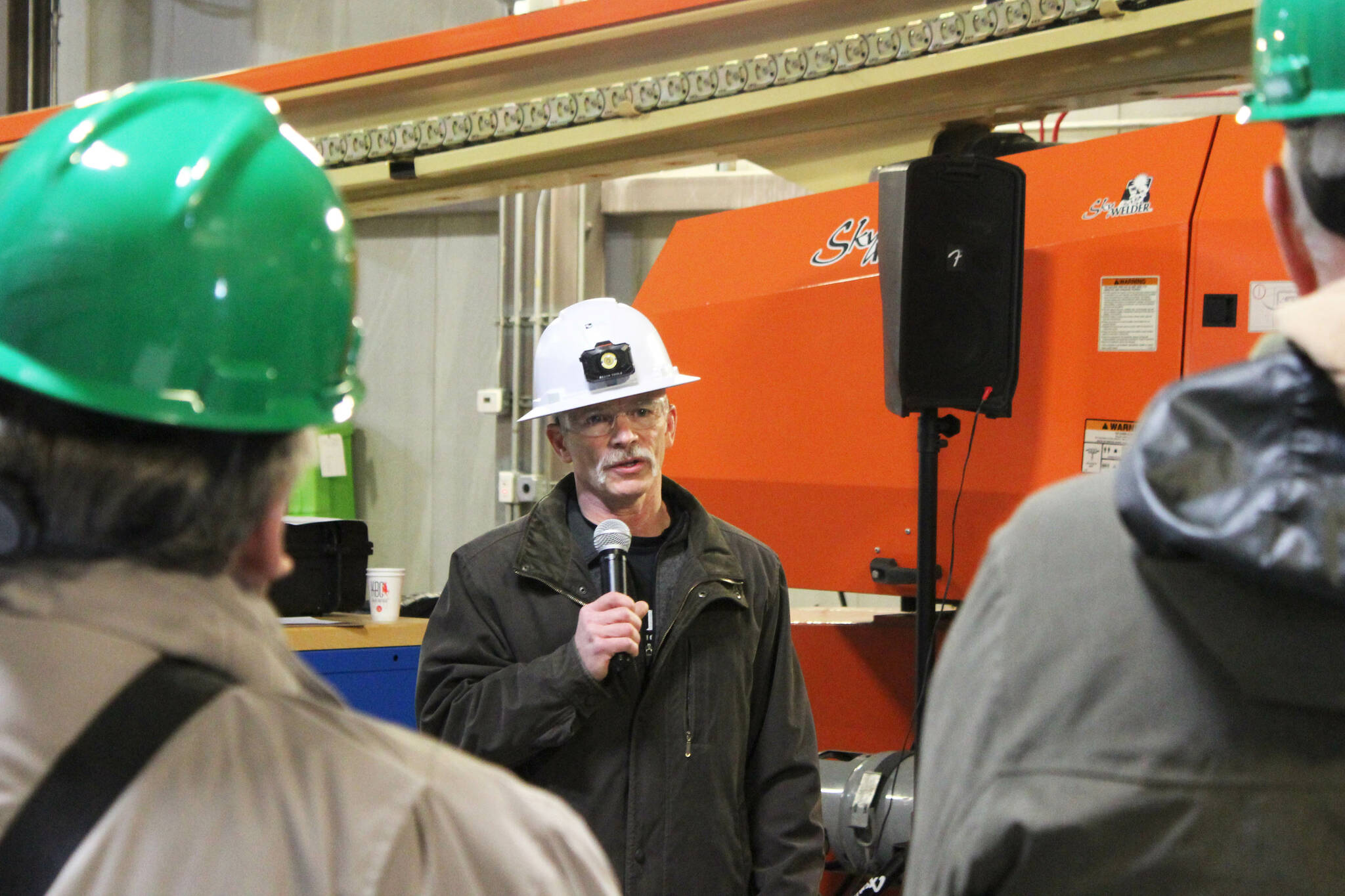A group clad in hard hats and protective eyewear huddled near Soldotna on Tuesday to commemorate the completion of Homer Electric Association’s new battery energy storage system.
That system, called BESS, provides HEA with a stash of energy capable of keeping customers’ lights on in the event of an outage and provides new ways for the cooperative to collaborate with renewable energy producers. HEA leaders were joined Tuesday by the Soldotna Chamber of Commerce to cut a ribbon in front of BESS.
The storage system is composed of 37 modular lithium ion batteries, made by Tesla, stored in 52,000-pound containers called megapacks. Those megapacks are capable of storing 93 megawatt hours of electrical power that can be delivered at a rate of 46.5 megawatts per hour, according to HEA.
HEA’s BESS landed on the Kenai Peninsula early last year and was integrated into commercial operation in January. It’s the largest system in Alaska, though not the first — Fairbanks’ Golden Valley Electric Association installed one in 2003. The storage system is housed at its Soldotna Generation and Substation Facility.
BESS’s ability to store 93 megawatt hours of power means that if all power generation on the Kenai Peninsula was lost, HEA could keep the lights on for about three-fourths of its members, HEA General Manager Brad Janorschke told attendees at Tuesday’s ribbon-cutting.
HEA signed in 2019 an agreement with Tesla for the project, which received a financial boost from the federal government.
The Alaska Electric & Energy Cooperative, a subsidiary of HEA, received in 2021 a $38 million loan to finance the BESS project from the U.S. Department of Agriculture. The funds, made available under the Electric Loan Program, were promoted as part of the federal Build Back Better initiative as a way to reduce the impacts of climate change in rural Alaska.
The arrival of the BESS to HEA comes as the cooperative is working to expand how much of its energy comes from renewable sources. HEA’s Board of Directors in 2021 established a goal of generating 50% of the company’s energy needs through renewable energy sources by 2025.
There are also cost savings associated with the storage system. When HEA is not connected to the rest of Alaska’s Railbelt grid — such as during the 2019 Swan Lake Fire — it is more expensive to operate its own grid. When islanded, it costs HEA about $24,000 per day to operate its grid.
Janorschke told attendees at Tuesday’s ribbon-cutting ceremony that the energy stored in BESS is accessible even if energy is not actively being generated.
“When it’s cloudy and the solar quits producing or the wind stops blowing and the turbines stop, we can still store energy here,” Janorschke said. “The biggest advantage for us has to do with spending reserve.”
More information about HEA and the company’s energy projects can be found at homerelectric.com.
Reach reporter Ashlyn O’Hara at ashlyn.ohara@peninsulaclarion.com.

